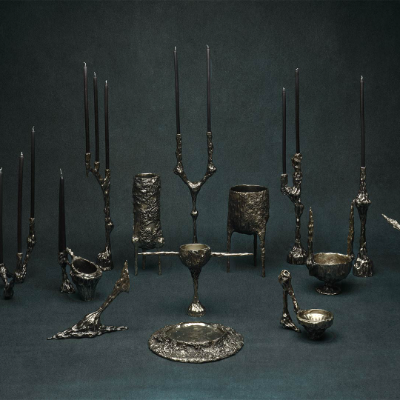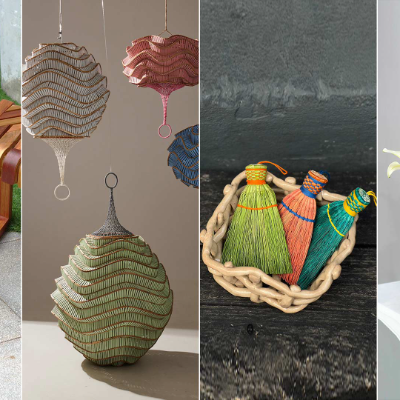“Everyone has a favourite spoon or cup that they use all the time. That emotional connection to objects we use every day gives us comfort,” expresses Michael Hoppe of Hop Design Studio, Sydney, Australia. The studio has come up with an adaptive cutlery set that observes the conjunction of design with technology; to create an inclusive dining experience for people with varied abilities. The 24-piece cutlery set has been 3D-printed and emanates the conceptual aesthetic of a typographic font. Michael Hoppe’s Font Cutlery Set was also shortlisted for the Dezeen Awards 2022 appertaining its cohesive design along with an expansive and customisable design sensibility.
“Cutlery solutions for people with disabilities can be orthopaedic looking and create a sense of 'other' when sitting next to regular cutlery and we aim to change that,” says Hoppe. While most hand strength, dexterity, and control levels might vary according to age, injury, arthritis, congenital difficulties, and other factors, it is impossible to provide a general answer to these variations and needs. The cutlery set was designed as a universal solution for a disabled-friendly fine-dining experience, thus, inclusion for all. Evidently, adaptive homeware isn't a thought that has never been pondered upon. The consumer-driven market already has a variety of adaptive homeware products that are specific to singular ailments. For instance, weighted utensils for people with Parkinson’s disease. Forks and knives with an easy grip that is well-suited for the aged population or people with arthritis. Curved utensils to assist those who struggle with fine motor skills and many more. However, Hoppe’s cutlery set caters to each ailment with a universal solution, through its adaptive design.
For the design conceptualisation, the Australian designer emphasised empathic and user-centred design, for which, he consulted and tested the product with end users and occupational therapists. He also gathered insights from Arthritis Australia, a charitable non-profit organisation, that works alongside people with cerebral palsy. The design of the Font cutlery set can be customised to suit different users while adding value to the design through research and development.
The project is the result of an independent study into digital manufacturing and parametric design. The product designer states the consistent use of 3DCAD and 3D printing as part of his design process, alongside CNC machine cutting, in an attempt to attain zero-waste digital manufacturing. “By using parametric CAD modelling and 3D Printing, a product with a strong overarching aesthetic holding it together, can be turned into a variable range which provides a broad range of solutions for different user needs,” says Hoppe. The collection is bound together by a common aesthetic. Different yet related items merge to form a family where appropriate product modifications can be made to enhance functionality while maintaining the close familial resemblance.
The minimal profile and simple lines support different ergonomic requirements while staying within a proscribed aesthetic, uniting the range and further benefiting the user in terms of functionality. By employing digital technologies, the potential for specialised product design Active and manufacturing is growing, and commercial possibility is attainable. Every user can now get involved in the creation of products and feel a connection to them.






 Sign in with email
Sign in with email













What do you think?